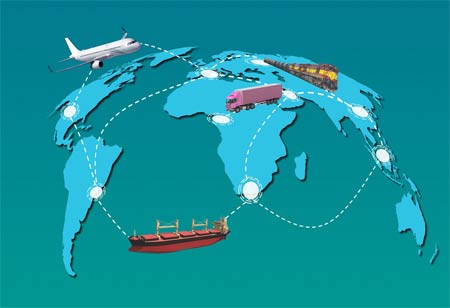THANK YOU FOR SUBSCRIBING
THANK YOU FOR SUBSCRIBING

By
Logistics Transportation Review | Thursday, May 18, 2023
Stay ahead of the industry with exclusive feature stories on the top companies, expert insights and the latest news delivered straight to your inbox. Subscribe today.
As shipping lines look to fill their vessels as demand decreases, tensions between carriers and shippers are easing.
FREMONT, CA: The marine freight business has seen more difficulties in recent years due to changes in import and export regulations and increased carbon emission taxes being considered for shipping. A 40' container's price in Asia and Europe grew roughly eight times between 2019 and 2022 due to terminal congestion, ship capacity restrictions, and a lack of available containers.
The Suez Canal embargo and the political unrest in Europe added to the already turbulent environment by driving up the price of raw materials and forcing businesses to place bulk orders to cover shipping expenses and be ready for shortages.
Rising costs: The most recent figures show that shipping prices are at an all-time high. Sea freight shipping between the UK and China will cost 350 percent more starting in 2021. The Covid 19 epidemic is now substantially influencing marine freight costs around the globe. To cut expenses, AGI provides some of the most affordable maritime freight rates accessible. In addition to providing custom sea freight packages to aid with cost savings, services have built enduring relationships with many premium carriers.
Interruptions: External issues that affect sea freight transportation include political unrest and natural disasters. There are, however, steps that may be taken to lessen interruptions. Delivery delays for maritime freight can result from various circumstances, such as obstructions in shipping lanes, difficulties clearing customs, and problems at ports. In the worst situation, your shipment could not be allowed access. In the marine freight business, faulty documentation can result in protracted delays. Obtaining consular paperwork, import/export documentation, business invoices, insurance certifications, and itemized content lists are all necessary steps in the procedure.
Meeting demands: Shipping across borders is challenging. Reports of marine freight not arriving at its destination are becoming more frequent. Many marine freight forwarders need more worldwide expertise and distributor network to offer the necessary level of service. They can move freight confidently because of their close links to and working relationships with partners and agents worldwide.
Resource availability: Customs clearance laws have changed, complicating sea freight shipping. Many freight forwarding businesses underestimated the amount of documentation that would be required and needed to prepare for the new law. New restrictions have brought on significant delays, increased expenses, and supply chain disruptions. Having to modify their operations to comply with the new restrictions has significantly impacted businesses that export products. Due to the additional paperwork, several businesses were forced to recruit more workers, which increased their expenses and extended the time it took for consumers to receive their orders.
Communications: In recent years, switching from one mode of transportation to another has frequently resulted in lost, damaged, or delayed products. This is frequently caused by poor communication between sea freight and air freight companies or road freight operators. Lack of communication between the various supply chain participants can result in improper tracking and recording of items, leading to delays or losses in the supply chain. This makes locating the cause of any problems
I agree We use cookies on this website to enhance your user experience. By clicking any link on this page you are giving your consent for us to set cookies. More info





